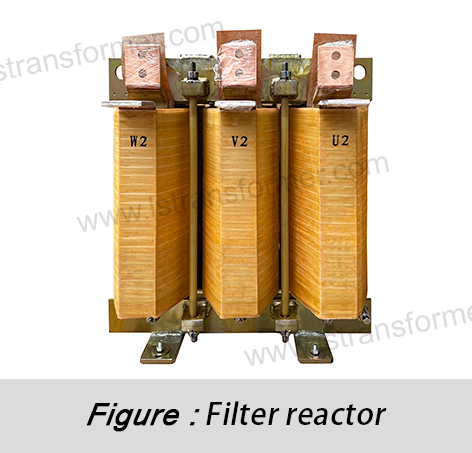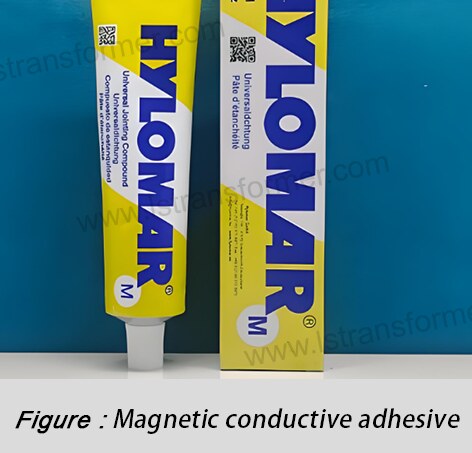Why Might the Temperature Rise Distribution in Reactors Be Non-Uniform?
Why Might the Temperature Rise Distribution in Reactors Be Non-Uniform?
In power systems, reactors play an indispensable role in current limiting, filtering, and reactive power compensation. However, engineers and maintenance personnel often observe significant temperature differences at different locations within the same reactor. This non-uniform temperature rise not only affects equipment efficiency but also threatens its long-term reliability and lifespan. So, what exactly causes this uneven temperature distribution? This article delves into the underlying physical mechanisms, key influencing factors, and effective mitigation strategies.
Content
1. Non-Uniform Current Density: The Source of Heat Generation Differences
● Root Cause:According to Joule’s Law (Q = I² × R × t), the heat generated in a conductor is proportional to the square of the current (I²). When current flows through reactor windings (especially in large multi-layer windings), its distribution is not perfectly uniform.
● Detailed Mechanisms:
(1)Skin Effect:Alternating current tends to concentrate near the surface of the conductor, resulting in much higher current density at the surface compared to the core. Higher frequencies exacerbate this effect, causing significantly more heat generation per unit volume near the conductor’s outer layer.
(2)Proximity Effect:Parallel or adjacent conductors carrying AC current influence each other, causing current to concentrate on the sides closest to neighboring conductors. This further increases current density and heat generation in localized areas (especially near conductor edges).
(3)Winding Structure:In multi-layer windings, different layers experience varying magnetic field environments. End turns may link more leakage flux than middle turns, or slight variations in turn length (e.g., at winding ends) can lead to minor differences in impedance and current density, affecting heat generation.
● Result:Areas with high current density (e.g., conductor surfaces, edges near adjacent conductors, or specific turn positions) become "hotspots," generating significantly more heat per unit volume and causing localized overheating.
2. Non-Uniform Leakage Flux: Creating Hotspots Through Eddy Current Losses
● Root Cause:During operation, reactors inevitably produce leakage flux in addition to the main flux. Varying leakage flux (especially in AC reactors) induces eddy currents in metal components (e.g., cores, clamps, tanks, magnetic shields), generating eddy current losses (P_eddy ∝ B² × f² × t²). The distribution of leakage flux directly determines the magnitude of these losses.
● Detailed Mechanisms:
(1)Structural Asymmetry:Areas like winding ends, lead exits, core joints, or near cooling ducts often have discontinuous or asymmetric magnetic paths, leading to higher leakage flux density (B).
(2)Flux Concentration:Leakage flux tends to concentrate at core edges, clamp corners, or tank walls near windings. Poorly designed magnetic shields can also cause localized high flux density.
(3)Eddy Current Paths:In conductive materials (e.g., silicon steel, structural steel), changing magnetic fields create circulating eddy currents. Eddy current losses are proportional to the square of local flux density, so areas with strong leakage flux experience drastically higher losses.
● Result:Regions with concentrated leakage flux (e.g., winding ends, core edges, or localized tank areas) become "loss hotspots," generating excessive heat and creating significant localized high temperatures.
3. Cooling Condition Variations: Bottlenecks in Heat Dissipation
● Root Cause:According to Newton’s Law of Cooling (Q = h × A × ΔT), heat dissipation depends on the heat transfer coefficient (h), surface area (A), and temperature difference (ΔT). Natural or structural differences in cooling conditions exist within reactors.
● Detailed Mechanisms:
(1)Internal Location Differences:Heat from inner winding turns or core laminations must first conduct to surfaces or cooling channels before being carried away. Deep internal regions face long conduction paths and high thermal resistance, making heat dissipation difficult. In contrast, surface areas near cooling channels (e.g., oil ducts, air vents, radiators) dissipate heat efficiently.
(2)Non-Uniform Cooling Medium Flow:
– Oil-Immersed Reactors:Oil flow in winding or core ducts may be uneven. Narrow, bent, or stagnant areas ("low-flow zones" or "dead oil zones") experience reduced convective heat transfer (h), causing heat buildup. Oil impurities can also block flow paths.
– Dry-Type Reactors:Airflow (natural or forced) may be obstructed by winding structures, duct designs, or installation obstacles. Areas like winding centers, bottoms, or leeward sides may have poor airflow or dead zones, reducing cooling efficiency.
(3)Limited Surface Area:Structural components (e.g., clamps, braces) often have complex shapes with small effective cooling areas and may be located in poorly cooled regions, leading to higher temperatures than windings or cores.
● Result:Regions with obstructed heat paths or poor cooling medium flow (e.g., inner windings, core depths, oil/air dead zones, or structural parts) may become high-temperature zones due to heat accumulation, even if heat generation is not the highest.
4. Material Properties and Contact Thermal Resistance: Barriers to Heat Conduction
● Root Cause:Heat conduction follows Fourier’s Law (q = -λ × ∇T), where thermal conductivity (λ) is critical. Thermal resistance at material interfaces (contact resistance) also impedes heat flow.
● Detailed Mechanisms:
(1)Material Conductivity Differences:Reactors use diverse materials:
–Conductors (Cu/Al):High conductivity (λ ≈ 400/240 W/m·K).
–Insulation (paper, varnish, Nomex®, epoxy):Low conductivity (λ ≈ 0.1–0.5 W/m·K).
–Core Laminations:Good in-plane conductivity (λ ≈ 30–50 W/m·K), poor cross-plane.
–Structural steel, oil, air:Low conductivity (λ ≈ 40–50, 0.1–0.2, ~0.025 W/m·K).
(2)Insulation Thermal Resistance:Heat from conductors must pass through insulation, which has high thermal resistance. Thicker or multi-layer insulation worsens this, trapping heat inside conductors.
(3)Contact Resistance:Imperfect contact between core laminations, winding spacers, or assembly interfaces (due to roughness, oxidation, low pressure, or coatings) creates high contact resistance (R_contact), severely hindering heat transfer.
● Result:Poorly conductive materials (especially insulation) and high-contact-resistance interfaces impede heat flow from sources (conductors, cores) to cooling surfaces or media, exacerbating localized overheating.
5. External Environment and Operating Conditions: Amplifiers of Non-Uniformity
● Root Cause:The reactor’s physical environment and operating state directly affect overall cooling and internal loss distribution.
● Detailed Mechanisms:
(1)Ambient Temperature:High ambient temperatures (Ta) reduce the cooling medium-to-hotspot (ΔT), lowering (Q) and worsening hotspot issues.
(2)Sunlight (Outdoor Installations):Direct sunlight heats tank or encapsulation surfaces, reducing capability and indirectly worsening internal cooling.
(3)Poor Ventilation/Space Constraints:Restricted airflow around dry-type reactors or radiators hinders cooling, raising overall temperatures and unevenness.
(4)Harmonic Currents:Non-linear loads generate harmonics, increasing eddy and stray losses (P_loss ∝ I² × f). These losses are often unevenly distributed (e.g., concentrated on surfaces), creating or intensifying hotspots.
(5)Overloading:Extended overcurrent operation increases all losses (I²R, eddy currents), raising temperatures.bottlenecks become more sensitive, worsening non-uniformity.
● Result:Harsh environments (heat, sunlight, poor airflow) and (harmonics, overloading) amplify inherent temperature rise, making hotspots more severe.
6. Key Strategies to Mitigate Non-Uniform Temperature Rise
Understanding these causes enables better control. Modern reactor design and maintenance employ these strategies:
● Optimized Electromagnetic Design:
(1)Use advanced simulations (e.g., ANSYS Maxwell, JMAG) to predict and reduce hotspots.
(2)Optimize winding transposition, core design, and magnetic shielding to balance currents and control leakage flux.
● Enhanced Cooling:
(1)Oil-Immersed:Optimize oil ducts, use high-λ insulation, add radiators or forced oil cooling.
(2)Dry-Type:Improve airflow, use high-λ encapsulation, and add localized cooling.
(3)Apply high-emissivity coatings to boost
● Material and Process Improvements:
(1)Use high-λ insulation, ensure tight core lamination, and fill gaps with thermal interface materials.
● Smart Monitoring:
(1)Install temperature sensors (fiber optic, Pt100) at hotspots.
(2)Perform regular IR inspections and monitor harmonics/loads.
Non-uniform temperature rise in reactors stems from uneven current density, leakage flux, cooling conditions, material limitations, and external factors. Addressing these through advanced design, cooling, materials, and monitoring ensures safe, efficient, and reliable operation worldwide.
By targeting reactor temperature rise, hotspot mitigation, and cooling optimization, this article enhances SEO visibility while providing actionable insights for global audiences.
Contact Us
LuShan, est.1975, is a Chinese professional manufacturer specializing in power transformers and reactors for 50+ years. Leading products aresingle-phase transformer, three-phase isolation transformers,electrical transformer,distribution transformer, step down and step up transformer, low voltage transformer, high voltage transformer, control transformer, toroidal transformer, R-core transformer;DC inductors, AC reactors, filtering reactor, line and load reactor, chokes, filtering reactor, and intermediate,high-frequency products.
Our power transformers and reactors are widely used in 10 application areas: rapid transit, construction machinery, renewable energy, intelligent manufacturing, medical equipment, coal mine explosion prevention , excitation system, vacuum sintering(furnace), central air conditioning.
Know more about power transformer and reactor :www.lstransformer.com.
If you would like to obtain customized solutions for transformers or reactors, please contact us.
WhatsApp:+86 17267488565
Email:marketing@hnlsdz.com

 EN
EN
 FR
FR DE
DE ES
ES


